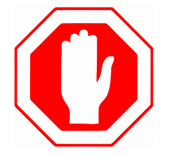RL Blogs

By Ralph Laurel
Aug 29, 2016Know your unit operating constraints, then push them... |
||||||
| Everywhere you look within a refinery, you’ll likely find a limit. Some prevent your flow from going too high, others ensure that your temperature doesn’t go too low, and so on so forth. Most are there for good reason, yet some may be outdated limits or even worse… there for no reason.
So are you going to let a limit slow you down? If you’re a good engineer the answer is, “You kidding me? You call that a limit?”
Many limits have huge financial consequences and being able to break that constraint can result in huge savings. So it’s worth validating that the existing limit is truly a limit.
Let’s break these limits into two categories…
The Historical Limit
Unless you can formulate a technical basis for a limit, it needs further investigation. Try to gather background information and validate some of the history behind the constraint. Was the violation of the limit the true cause of the “bad thing” or was there some other factor?
If a theoretical limit can be calculated, compare it to the historical limit and determine if the two are close. If not, some sort of test run is likely merited. Move the limit slowly and address any concerns with a mitigation or contingency plan.
Unit operations, equipment, controls, and people are always changing. There’s no reason a historical limit should remain in place without evaluation.
The Theoretical Limit
pump curve. Yet that doesn’t mean that the limit is set in stone. Drive down to what is truly setting that limit. On a pump flow that may be set by vibrations, motor limitations, or impeller size.
Data can be gathered to ensure a limit is being reached as predicted by theoretical data. And once you determine that the current limit is reasonable, it’s possible that a small investment could eliminate the constraint.
A spillback can be added to lower pump flow and possibly reduce reflux on a tower. The cost of a motor or impeller upgrade may also be justified based on the benefits from eliminating the constraint.
Even when it comes to vessel pressures or temperatures there are small changes that can help you push closer to the limit. It’s possible equipment can be rerated to run higher temperatures if you can commit to lowering the design pressure.
If tower pressure is limited by how close you can run to the set pressure of a relief valve, consider changing the design of the relief valve. A pilot relief valve can enable you to run at higher pressures than a standard relief valve.
| ||||||
|
|











